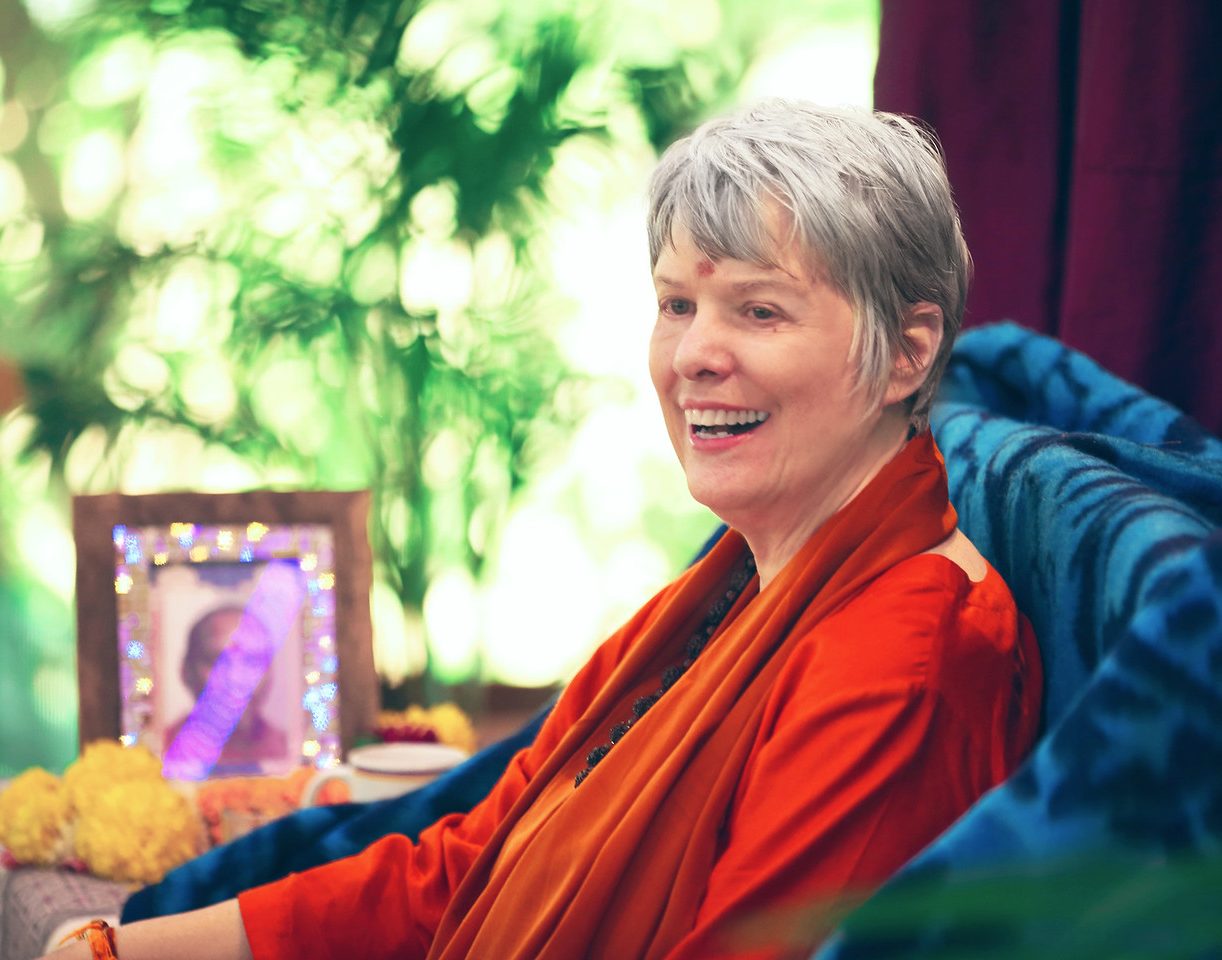 By Swami Nirmalananda Saraswati
By Swami Nirmalananda Saraswati
I love to introduce new students to yoga by starting them with the Shavasana adjustments. Once they lie down on their back, I make sure they have enough blankets under their knees and then I shift one shoulder blade on the floor underneath them. After realigning that shoulder, I ask, “What is the difference?’ Most students report that the shoulder feels lower, flatter or more relaxed. But quite a few report that their other shoulder is tighter.
Instead of reporting that the one I adjusted feels better, they focus on the discomfort in the other one. If I now adjust the second one, then they report on a different pain in their body, and then another… They don’t know how to actually feel GOOD. When their first shoulder feels good, they quit looking at it, and they go looking for any spot of pain to focus on.
Your mind loves to do the mental equivalent of picking at scabs. When you have a cut that is still healing, the scab forms and the healing is going on underneath. It progresses so well that the edges of the scab become loose. You know that you really should leave the scab alone and let the healing process continue underneath, but you pick at the edge. When you pull on it, sometimes you pull it all the way off and the bleeding begins again. You have reinjured yourself and the healing process will take longer this way. Yet you do it with your body — and you do the equivalent process with your mind.
You have some say in where your mind goes. Picking at the unhealed hurts is not a way of healing them. Living in the constant memory of difficult things you experienced in the past is a way of perpetuating the pain or even reinjuring yourself. Living in constant worry about the future is a way of creating pain from events that you may never have to live through. It’s almost as though you have an addiction to pain.
 There is another alternative. Instead of having to choose between feeling pain and feeling nothing, what if you could actually feel good? It is simply a matter of choosing where to focus your attention. With this new yogi, still lying in Shavasana with only one shoulder shifted into place while noticing the other (unadjusted) shoulder, I say, “OK — your other shoulder still hurts. But, how does this one feel? I moved it — does it feel any different?”
There is another alternative. Instead of having to choose between feeling pain and feeling nothing, what if you could actually feel good? It is simply a matter of choosing where to focus your attention. With this new yogi, still lying in Shavasana with only one shoulder shifted into place while noticing the other (unadjusted) shoulder, I say, “OK — your other shoulder still hurts. But, how does this one feel? I moved it — does it feel any different?”
It can take two or three tries before she or he can actually describe the shoulder that was adjusted. She/he stammers and searches for unfamiliar words – words that describe a sensation of feeling good. It is an important moment, which is not just about the body. This is an important learning — learning how to feel good. Learning to look at what feels good, even if everything else isn’t perfect.
This is an important change in perspective, though it is not really yoga. It is a good beginning because, in yoga, you have to learn to look at what feels good. Yet this new ability is not for the purpose of feeling good. It is so that you can retrain your mind. It is not training your mind to deny the problems that need to be taken care of, but it is being able to choose your attitude while you are handling them. When you can see the bright side, you can smile in the midst of the storm, and it is even good for your health! If that were all that yoga offered, it would be a lot. As your body is opening up, your attitude is lightening up.
Still, this is all preparatory training. This training prepares you to use your mind in more powerful ways — to use your mind to look beyond your mind. You learn how to use your mind to look at Consciousness-Within. Once you begin this process, you become free from the old patterns and reactions. You become free, progressively and powerfully free. This is yoga’s promise.